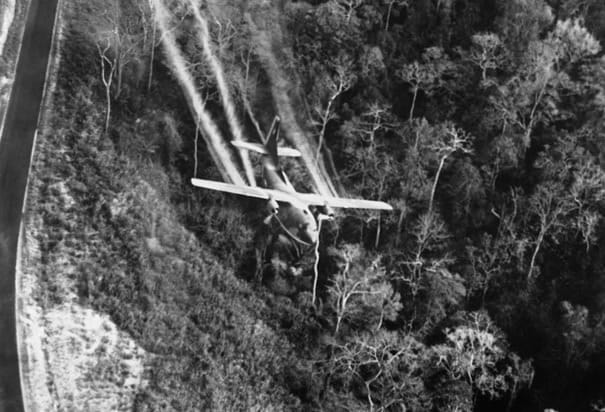Plan to Spray Herbicides along the Rio Grande Alarming, Risky

Down river from Big Bend, here is what they think of the plan to spray cane:
Following the December 6, 2016 post on this topic, I came across this article from March 2016 dealing with the reaction of communities on the lower Rio Grande to the proposed use of glyphosate, more commonly known by its trade name Roundup®.
The distance from El Paso to Brownsville is longer than the Ho Chi Minh Trail between Cambodia and South Vietnam, which was treated with Agent Orange during the Vietnam War. This widespread treatment resulted in devastating health consequences to the civilian population including two million birth defects linked to the chemical. Tens of thousands of American GIs were also harmed.
The unanticipated side effects of this “harmless” chemical left a horrific legacy that still lingers today. Insanity is doing the same thing – this time to ourselves – and expecting different results.
NOTE: This post initially appeared on SAExpressNews.com on March 17, 2016
We are alarmed at a new proposal from Austin and San Antonio that calls for aerial spraying of potent chemicals onto the banks of the Rio Grande.
The target is carrizo cane, an invasive plant, also known as giant river cane or Arundo donax. The first of the target locations are Del Rio and Starr County.
This is just the first step in an effort led by San Antonio state Sen. Carlos Uresti and the Texas State Soil and Water Conservation Board. The expected launch date is within the next 90 days, with public taxpayer dollars set to be poured onto private land.
This should cause all of us deep concern because of the public health and environmental implications, and the web of border security and immigration issues tied into this move.
The estimated cost of a 2008 pilot project in Laredo, which would have included aerial spraying of herbicides, was approximately $1 million per river mile. This method of controlling cane is expensive and requires multiple applications. Workers then have to revegetate the river bank once everything dies.
This is not the first time that a state or federal agency has attempted to spray herbicides along the Rio Grande, even next to populated and largely poor neighborhoods.
In 2008, our organization and several Laredo neighborhoods, collectively known as Barrio de Colores, were involved in a lawsuit that ended in a 2009 legal settlement with the U.S. Border Patrol.
That settlement forbade any aerial spraying of any chemicals along 16.1 miles of Laredo riverbank in perpetuity, i.e., forever.
The issue sparked local outrage and attracted national attention from CNN and other networks. It drew the involvement of then-U.S. Sen. John Kerry and the Mexican government, which, by the way, stated that its water intake plants were unable to filter out these chemicals for drinking water.
Despite this legal precedent, certain forces at the state level, and possibly congressional level, are now looking to go beyond the principles and spirit of that 2009 settlement.
What track record does the the conservation board have controlling cane along the Rio Grande with chemicals released by helicopter? Why are the governor and Texas Parks & Wildlife eager to earmark a half-million dollars for this project on private property?
No environmental studies have been done to gauge the risks, or to measure the potential off-target drift of these chemicals onto other living things. The most important question is why has the state chosen to ignore the work being done by the USDA along a 558-mile stretch of the Rio Grande, from Del Rio to Brownsville?
Results from the past seven years — which have been peer-reviewed and published — show a dwindling of the cane’s biomass by nearly 25 percent. The Border Patrol attended USDA demonstrations in Laredo this year to witness the USDA’s two-pronged approach of using biological agents (i.e., wasps) and a new cane topping method with special fitted tractors. This finally gives Border Patrol its long-desired, clear line of sight needed to do their job.
The USDA science team has shown that this method has generated a savings of $4.4 million with 6,600 acre-feet of agriculture water saved each year. This is significant since the Rio Grande remains one of the 10 most endangered rivers in the world precisely because of insufficient water supply.
Maybe Uresti, the governor, and the conservation folks in Austin think it’s OK to push ahead with aerial spraying because they don’t live here, and they don’t have to drink the Rio Grande tap water as we do.
That these state politicos now propose to do what the feds agreed not to do is a clever and cynical runaround of the 2009 settlement. It is an affront to the people of Laredo, and to all residents who live alongside and depend on the Rio Grande.
Tricia Cortez is executive director of the Rio Grande International Study Center, a Laredo-based nonprofit organization whose mission is to protect and preserve the Rio Grande-Rio Bravo and its environment.
